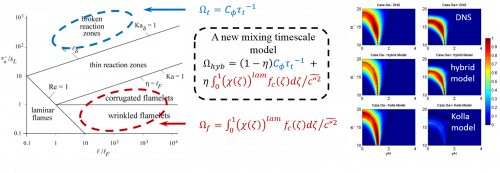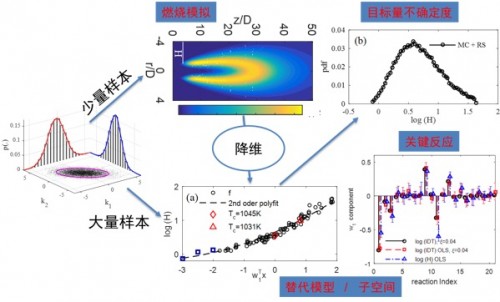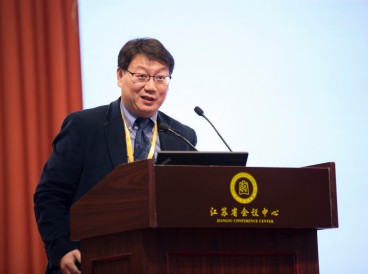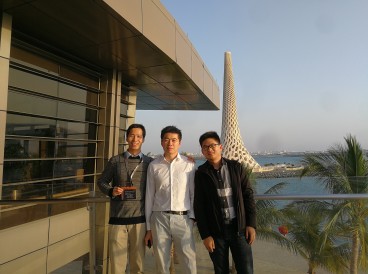Transported probability density function (TPDF) methods are attractive for modeling turbulent flames as the highly nonlinear chemical reactions appear in closed form. The ability of the TPDF methods to capture complex phenomena such as extinction and re-ignition has been well demonstrated for turbulent non-premixed flames. However challenges remain when applying the TPDF methods to turbulent premixed flames, for which modeling molecular diffusion is difficult because the local species gradients may be strongly influenced by chemical reactions. The specification of a constant mechanical-to-scalar timescale ratio to relate the scalar mixing timescale to the turbulence timescale is questionable for premixed flames in the flamelet regime.
A new mixing timescale model is proposed to account for both flamelet-controlled and turbulence-controlled mixing to more accurately model scalar mixing rates [1,2]. In the limit of passive scalar mixing, the mixing timescale is proportional to the turbulence timescale according to the classical expression. Conversely, in the limit of laminar flamelets embedded in a turbulent flow field, the scalar mixing rate is expected to depend on the laminar flame structure, where the conditional scalar dissipation rate can be obtained from 1D laminar premixed reference flames.
A priori assessment using the DNS datasets of the H2-air premixed flames, as well as a posteriori tests in CH4-air Slot Bunsen flames, both demonstrate the model potential to better predict scalar dissipation and flame characteristics.

[1] Zhou, Z., Li, S., Wang, H., and Ren, Z. 2015. An investigation of a hybrid mixing model for PDF simulations of turbulent premixed flames. 68th Annual Meeting of the APS Division of Fluid Dynamics.
[2] Kuron, M., Ren, Z., Hawkes, E.R., Zhou, H., Kolla, H., Chen, J.H., and Lu, T. 2017. A mixing timescale model for TPDF simulations of turbulent premixed flames, Combust. Flame, 177, 171-183

















